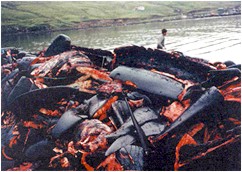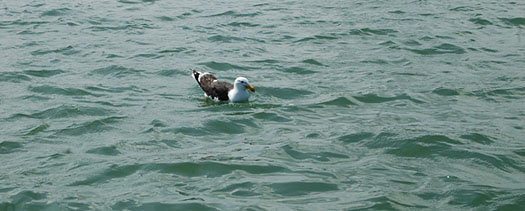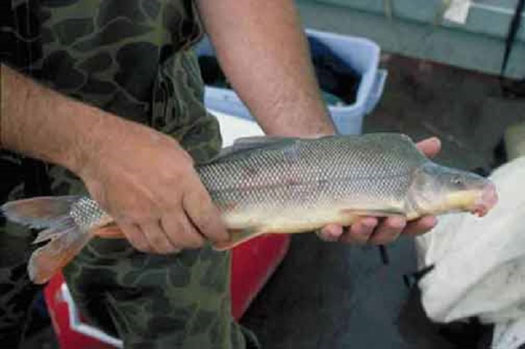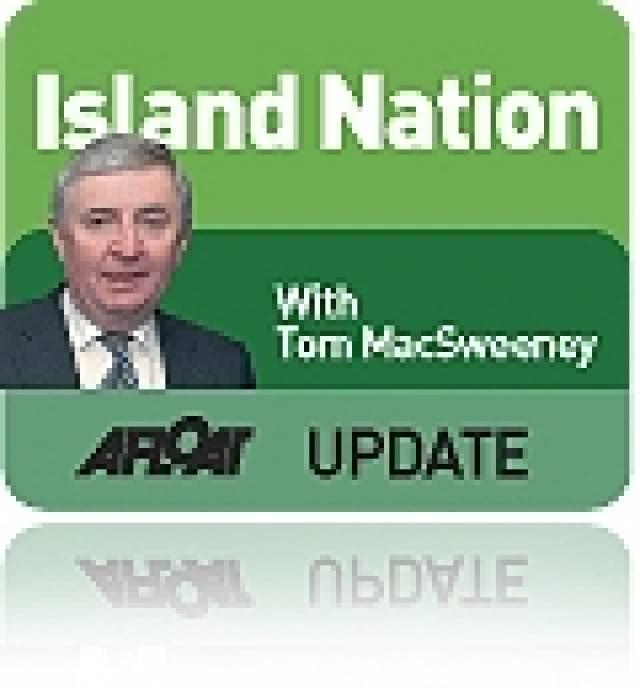#thisislandnation – Enjoying the current good spell of weather in the South of the country I have been reflecting on how marvellous Nature and marine wildlife is and how fortunate it is to have ownership of a boat which allows one to enjoy the sea.
Nature is marvellous and the sea a magnificent provider. Out comes the sun and where do people head for – the beaches and the sea. Provided by the physical location of this island nation where no place is more than 70 miles from the sea measured in those grand old Irish miles before a subservient political establishment re-named them kilometres to conform to European-ism. Perhaps ready access to the beaches might convey to people the value of living in an island nation, but many of those who headed for the beaches did not show much respect for the physical nature of those beaches, leaving mounds of rubbish behind.
Another aspect of Nature was in a picture which impressed me this week - that of 24-year-old David Kenefick rounding the Fastnet Rock off the West Cork coast in the single-handed French Figaro Race. Taken by photographer Bob Bateman as David sailed through waters with which he has been familiar since a young lad, he was watched by his family who had gone out by boat to cheer him on as he set course towards the French coastline. A young man determined to succeed in the tough world of professional sailing, using the power of Nature, the wind, the tides. He follows on a good friend of mine, Damian Foxall from Kerry, whose path to professional success was via the Figaro Race.
B31 ICEBERG, ANTARCTICA
Scientists are continuing to monitor an iceberg roughly six times the size of Manhattan, New York, which broke off from an Antarctic glacier. NASA glaciologist Kelly Brunt said the iceberg covers about 255 square miles (660 square km) and is up to a third of a mile (500 meters) thick. Known as B31, it separated from Antarctica's Pine Island Glacier last November. U.S. government organisations, including the National Ice Center and NASA are monitoring it. Scientists are particularly interested in this iceberg not only because of its size but because it originated in an unexpected location. "It's like a large sheet cake floating through the Southern Ocean," according to NASA
DISTURBING SLAUGHTER
What disturbed me most this week was the intention of the Faroe Islanders to continue their annual slaughtering of pilot whales. This is carried out by luring the cetaceans using sounds such as hitting wood against boats, into bayed areas where they are then killed in what appears to be a vicious blood-letting. The conservation group, Sea Shepherd, which has been controversial in some of its actions, is mobilising supporters to go to the Faroes which is Danish territory, to oppose the slaughter, called locally 'the grind.' The Sea Shepard campaign, referred to as 'Operation GrindStop 2014,' has no authority, but says its volunteers will disrupt the 'grind' and are prepared to go to jail to protect these marine animals. Sea Shepherd was formed in 1977 by an expelled Greenpeace board member and activist Paul Watson. Since Sea Shepherd's formation, the organisation has been involved in direct action and has been accused of being an "eco-terrorist" organisation which description it has rejected. It describes itself as "Neptune's Navy" which "Never Compromises."

Whale slaughter on the Faeroe Islands. Photo courtesy: Sea Shepherd
The Danish Government allows the killings. At one time whalemeat was a staple diet of Faeroe Islanders but in recent years medical advice has told the islanders not to eat so much of it. More than 265,000 small cetaceans in total have been reportedly killed in the Faroe Islands over the years, mainly between the months of June and October, according to Sea Shepherd - some 1,500 since July 2013.
What happens in the Faeroes is so much of a contrast to how whales and dolphins are valued in Irish waters, which are a protected area and where the sight of whales and dolphins is a treasured experience.
Another example of the differences in how Nature is perceived in different parts of the world is the deceitfulness of the Japanese where the killing of whales is concerned. Japan has caught and killed 30 minke whales in its first hunt since and despite the International Court Justice ruling earlier this year that specifically banned such practices. The Japanese Government claims that these killings were for scientific research, a statement that is not fooling anyone.
BUILT-IN NAVIGATOR
Turning back to the positives of Nature, I was enjoying a leisurely lunch moored in Crosshaven when the gull photographed here arrived to seek food.

A good navigator
A few titbits were passed outwards and I admired his navigational expertise. From his low perspective on the water the slight swell would obscure the titbits as the floated outwards, but unerringly the bird could pick up any titbit, homing in on it, no matter what angle it approached from. It was intriguing to watch. Built-in navigation?
SUCKER GETS ANOTHER CHANCE

A Razorback suckerfsh
Nature can recover from setbacks, which has been shown this week in the Grand Canyon National Park in the US where the "extremely endangered species of fish" - Razorback Suckers - have been discovered spawning in the canyon after being absent for more than two decades. The photograph by Johnson Joames of the US Fish and Wildlife Service shows that the endangered fish has returned to the lower part of the Colorado River within the Grand Canyon National Park. Despite their name, razorbacks are harmless fish, characterised by the high sharp-edged hump behind their head.
CHANGING NATURE IN CORK HARBOUR
The use of Nature does bring changes, which are very apparent in Cork Harbour where I sail. Three massive wind turbines are now in place, quite dominant as they are almost 500 feet high. By contrast, Dublin's Spire in O'Connell Street which has been described as soaring to infinity is only 390 feet high. I am not advancing this as one up for Cork! Opinions about the turbines are mixed. They were built without any major public planning opposition to provide power for the pharmaceutical industry in Ringaskiddy. There is, however, opposition to the renewed plans for the building of a new container port at Ringaskiddy. Cork Port's plans for this are being objected to by harbour residents. Noise and other pollution aspects are the reason.

New look Cork Harbour
The Port company says the development is essential economically and because of the increasing size of ships. They maintain Ringaskiddy is the natural place for the development. Local opposition says the new port should not be built in the middle of a residential area and allege that it will affect leisure use of the harbour. Another issue about the Natural environment.
Finally, the beauty of Nature and what man creates, my photograph shows the sight of a beautiful wooden sailing vessel in Cork Harbour where traditional boats gathered at Crosshaven last week and whose next gathering will be in Cobh next weekend.
Respecting what Nature provides is a hallmark of quality in human beings.
Twitter: @afloatmagazine @TomMacSweeney































































